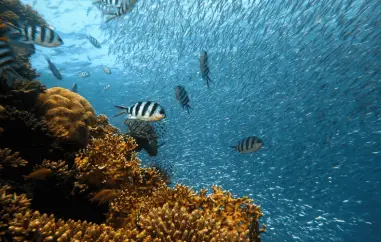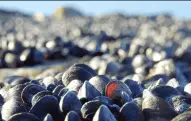Can Deep Water Corals Survive the Impact of Climate Change?
 The Great Barrier Reef (GBR) situated off the northeastern coast of Australia stands as the largest and arguably the most extensively studied coral reef globally. Yet, the prevailing discoveries have been disheartening. Year after year, scientists witness the ongoing bleaching and gradual demise of the GBR, composed of over 2,900 individual reefs.
The Great Barrier Reef (GBR) situated off the northeastern coast of Australia stands as the largest and arguably the most extensively studied coral reef globally. Yet, the prevailing discoveries have been disheartening. Year after year, scientists witness the ongoing bleaching and gradual demise of the GBR, composed of over 2,900 individual reefs.
However, a glimmer of hope now emerges for this natural wonder. Researchers from the University of Exeter and the University of Queensland have unveiled a significant finding: certain areas within the Great Barrier Reef, situated at depths of 30 to 50 meters, potentially offer refuge for corals even amidst marine heatwaves. "Under specific conditions, these areas could serve as sanctuaries," the scientists assert in the latest edition of the journal PNAS.
Corals are exceptionally vulnerable to heat stress and are thus considered among the foremost casualties of climate change. The escalating global temperatures result in warming oceans and an increase in marine heatwaves. In response, corals expel zooxanthellae, symbiotic algae vital for their survival. These algae, responsible for photosynthesis, provide essential nutrients to the corals. However, when water temperatures exceed 30 degrees Celsius, the algae lose their photosynthetic abilities, prompting corals to expel them and undergo bleaching. Currently, the Great Barrier Reef is experiencing its fifth mass bleaching event in the past eight years.
Corals can endure this bleached state for several weeks. If water temperatures decrease in time, the algae may return, rejuvenating the corals. However, prolonged heat stress proves fatal for corals. The Intergovernmental Science-Policy Platform on Biodiversity and Ecosystem Services (IPBES) warns that by the century's end, 99 percent of coral reefs could vanish, leading to the loss of numerous marine species dependent on these ecosystems.
The recent study reveals that certain deeper regions of the Great Barrier Reef remain insulated from the heat. Most existing studies predicting coral fate under climate change and rising temperatures solely consider surface water temperature increments, disregarding water column stratification, where the upper layer is warmer than the lower layer.
To address this oversight, researchers incorporated stratification effects into common climate models, assessing their impact on depths between 30 and 50 meters within the Great Barrier Reef. The study found that "stratification isolates many offshore regions of the Great Barrier Reef from surface heat waves." In essence, despite significant surface warming, deeper waters remain pleasantly cooler due to the intensified stratification caused by climate change, limiting vertical heat exchange.
Yet, this newfound hope is accompanied by a cautionary note. Jennifer McWorther, lead researcher, remarks, "Our study offers both hope and a warning." While some corals may withstand the current stage of climate change, not all species benefit. Shallow-water species lack refuge in deeper areas, rendering them vulnerable to upper water layer warming.
Moreover, the protective effect of stratification has its constraints. It diminishes when temperatures rise by over three degrees compared to pre-industrial levels, ultimately leading to bleaching and mortality even in the lower parts of the Great Barrier Reef.















































